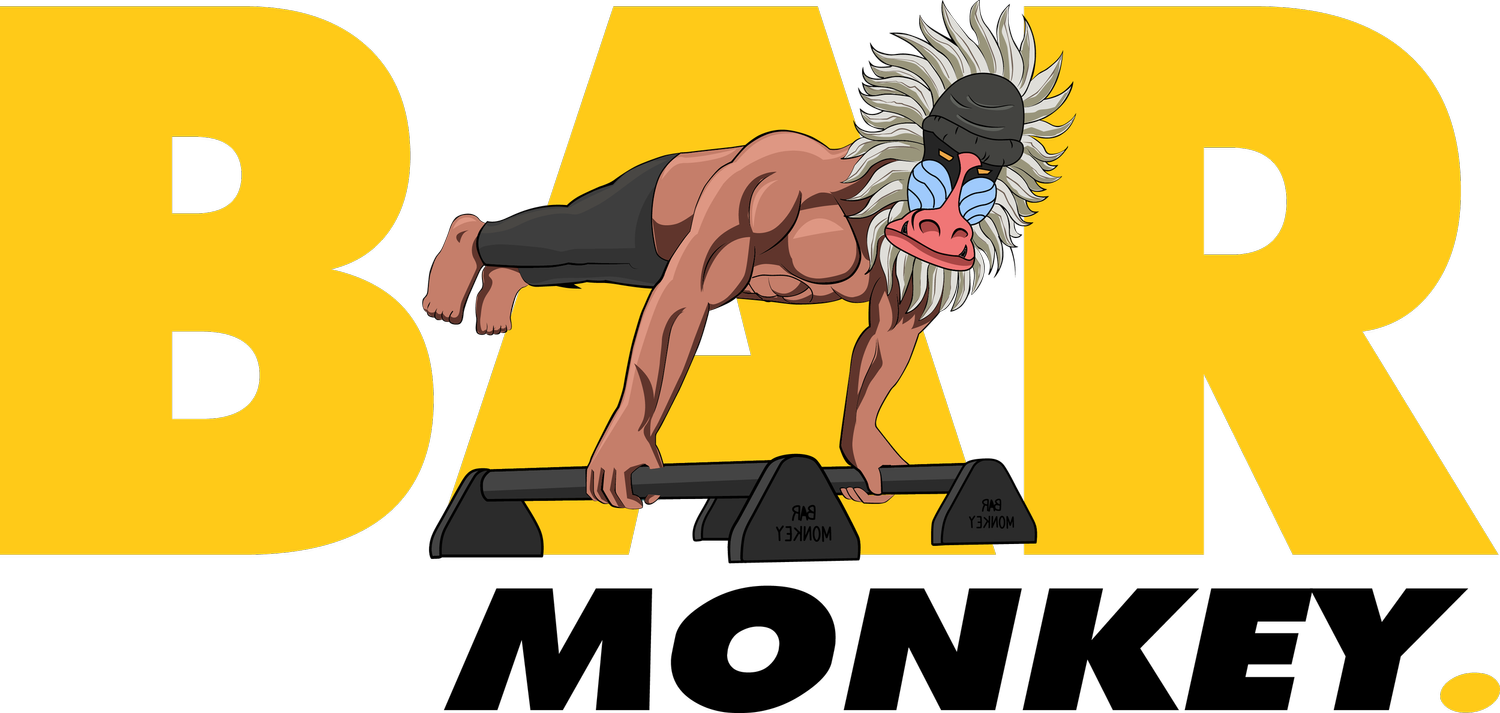Handstand: Top 5 Tips
The handstand - your journey starts here! Want to get more airtime upside down? These drills will focus on helping you gain correct body alignment and awareness. If you have been struggling to consistently stay upside down, kicking up and not managing to get the ‘feel’ for handstand each time then these drills are for you! The video is below, followed by more detailed descriptions for each exercise. Leave us a comment if you have any questions!
Step One - Shoulder Flexion
Pressing the band up helps to gain correct shoulder alignment along with developing the strength required to hold that position for a handstand. Having correct alignment requires shoulder flexion in order to be able to ‘stack’ the wrists shoulders and hips in a straight line.
Step Two - Handstand Shrugs
Shrugs help create an awareness of the ‘push’ that is involved with the handstand. It is the push ( extending the lats ) that enables us to hold the handstand by creating tension. Pressing through the hands and causing the extension of the lats is essential for holding the handstand.
Step Three - One Leg Handstand
One leg handstand helps us to find the correct alignment. This means a straight line from the wrist, shoulder, hip and ankle. These should all be stacked on top of each other in order to make the handstand feel easier - and get that ‘weightless’ feeling.
Step Four - Over / Under Corrections
The over / under corrections help to focus on two areas. One ‘stacking the hips’. So in our first position facing the wall, when we slide forward, or when we slide the feet down along the wall, we are trying to ensure the hips stack over the shoulders. We then push through the shoulders and when we have that tension we slowly bring the feet away from the wall. When the feet come off the wall, you can see Sara is actively pressing and this brings her into alignment and her chest closer to the wall.
In our second correction, we are deliberately starting with a slight arch - the ‘banana back’ as it is called in calisthenics. This helps to create awareness of the difference because when you bring your feet away from the wall you are creating body awareness ‘ok so this is what it feels like when I arch or kick too far’. When you bring the legs off the wall and into alignment ‘this is what it feels like when everything is level’. You can also feel the difference between your core being passive and active. So in an arched position, our core and glutes are passive. When we bring the feet off the wall and get straight line, we should be aiming to switch our glutes and core on.
Step Five - Tuck Handstand
My personal favourite when developing handstand! When we get to the halfway position our back has to be straight - there is no way to ‘cheat’ on the handstand because our back can’t arch, and we are required to push the whole time or else we will drop. This gives a really good replication of how the handstand should feel in terms of pressing through the hands, extending the lats and pushing the floor down. Just be sure to leave enough energy to be able to get out of the handstand at the end comfortably! In other words, don’t do this movement until failure, you still need enough energy to come down off the wall. Try record these attempts as well and ensure your hips are level with your knees, creating a ninety degree angle. Some people will go to low, recording will help you see and ( hopefully ) put yourself in the right position!
We hope these five tips help you get comfortable upside down! For more tips like this be sure to subscribe to our newsletter where you receive free weekly insights, tips and training articles - a great way to enter the world of calisthenics!
Check our Seminar Calendar to get involved with us and start your Calisthenics journey!
